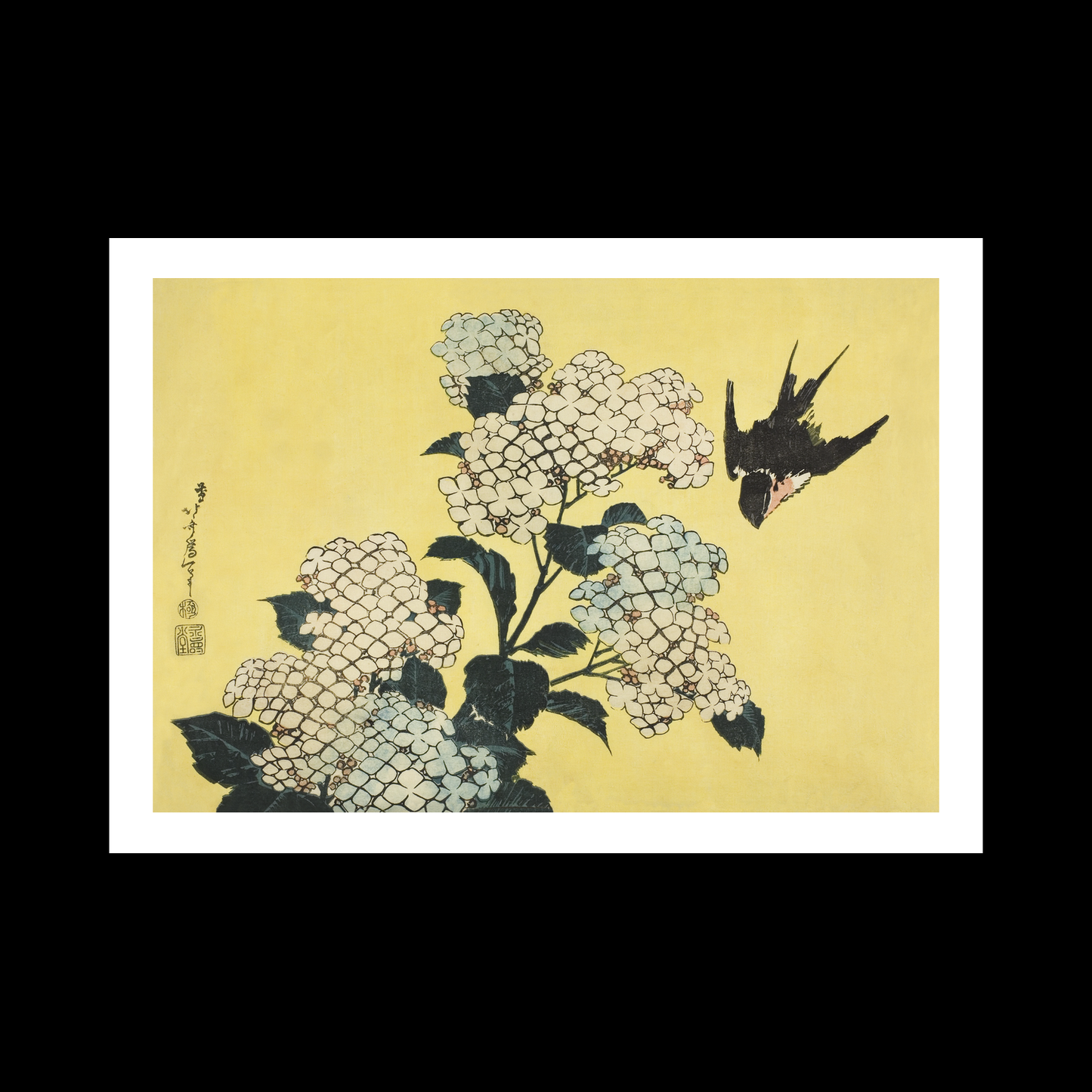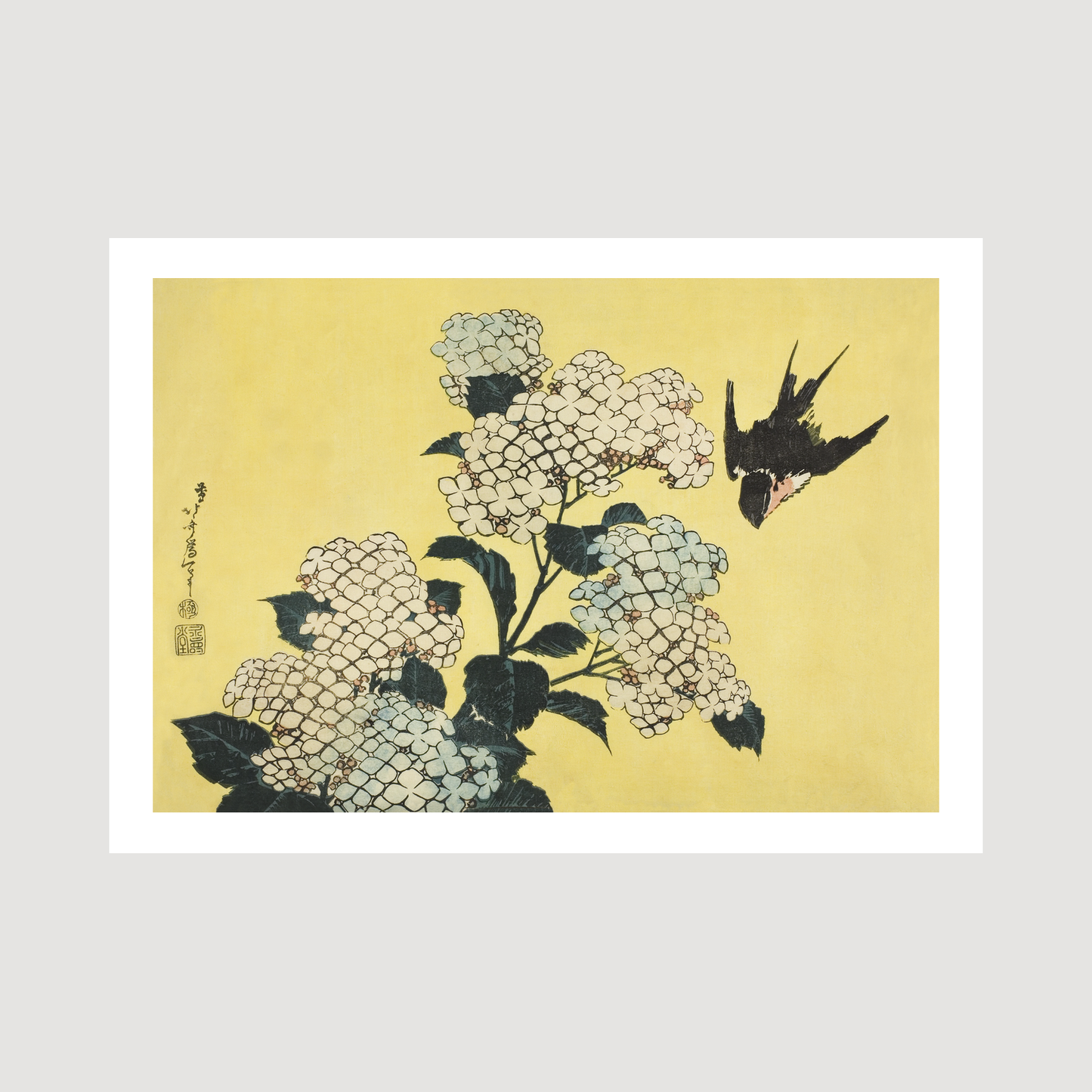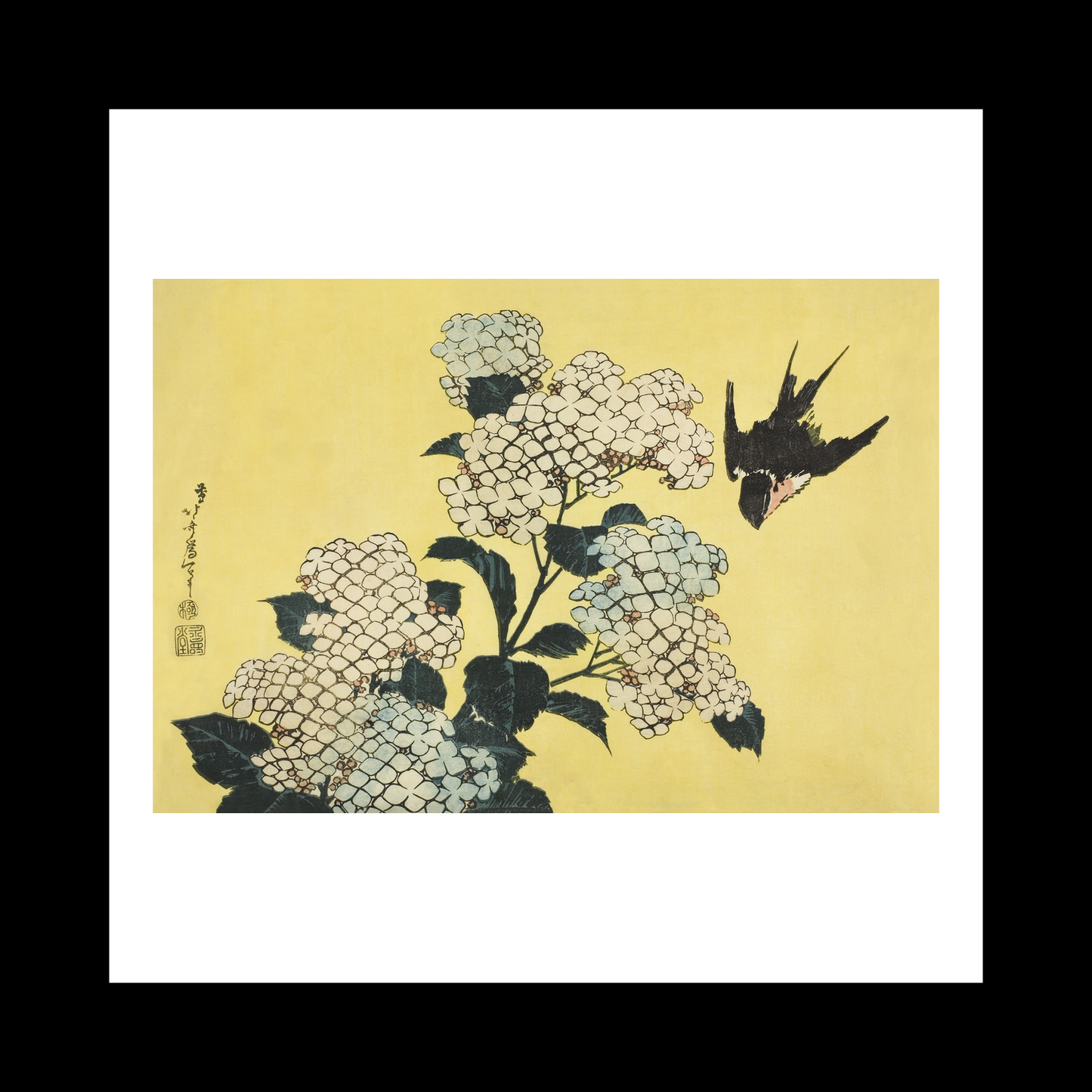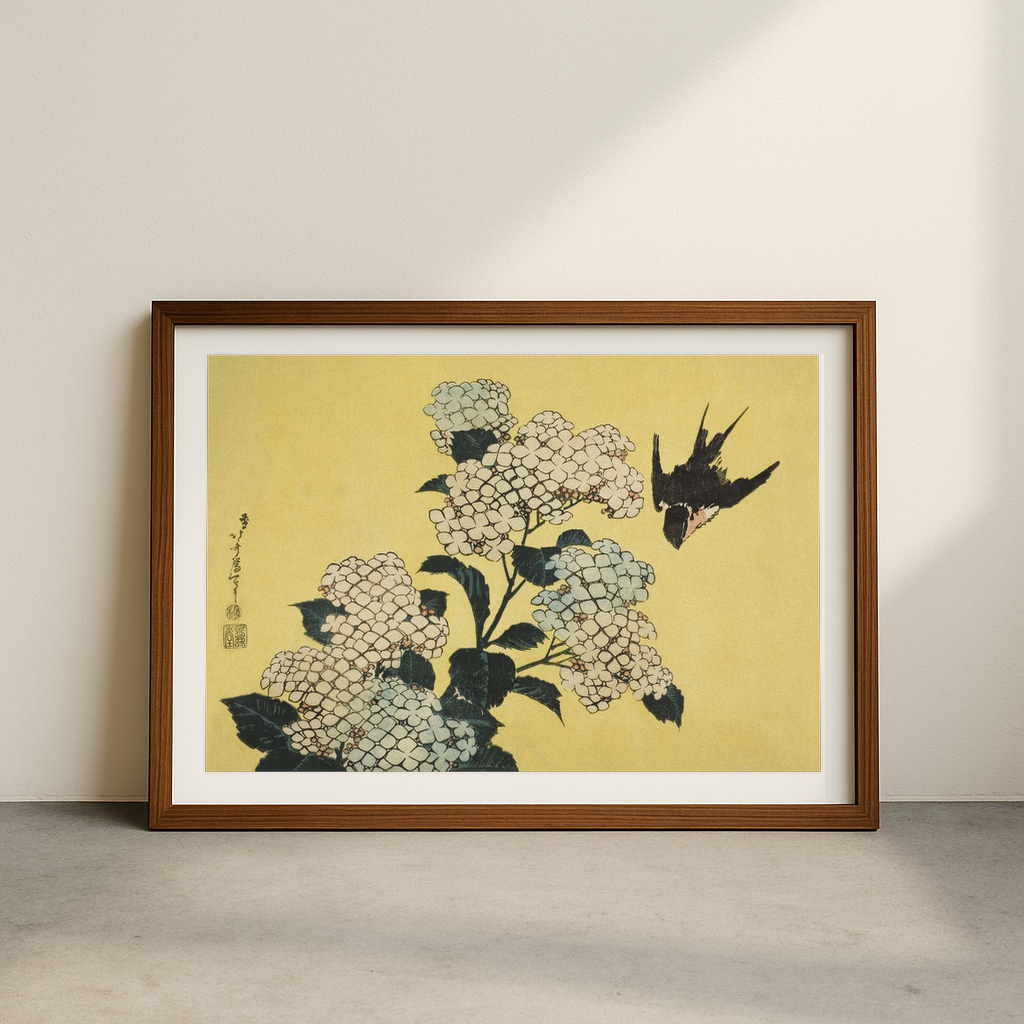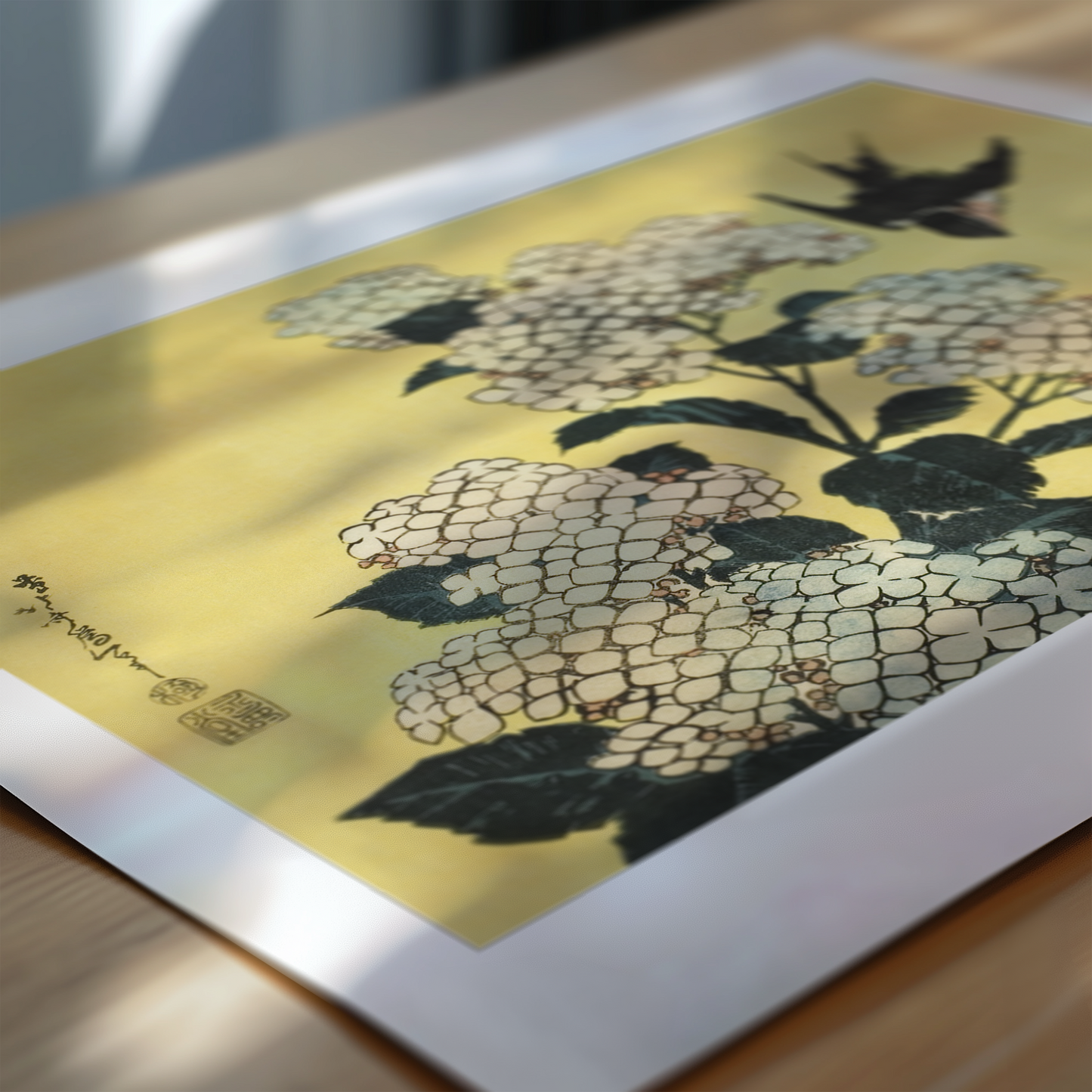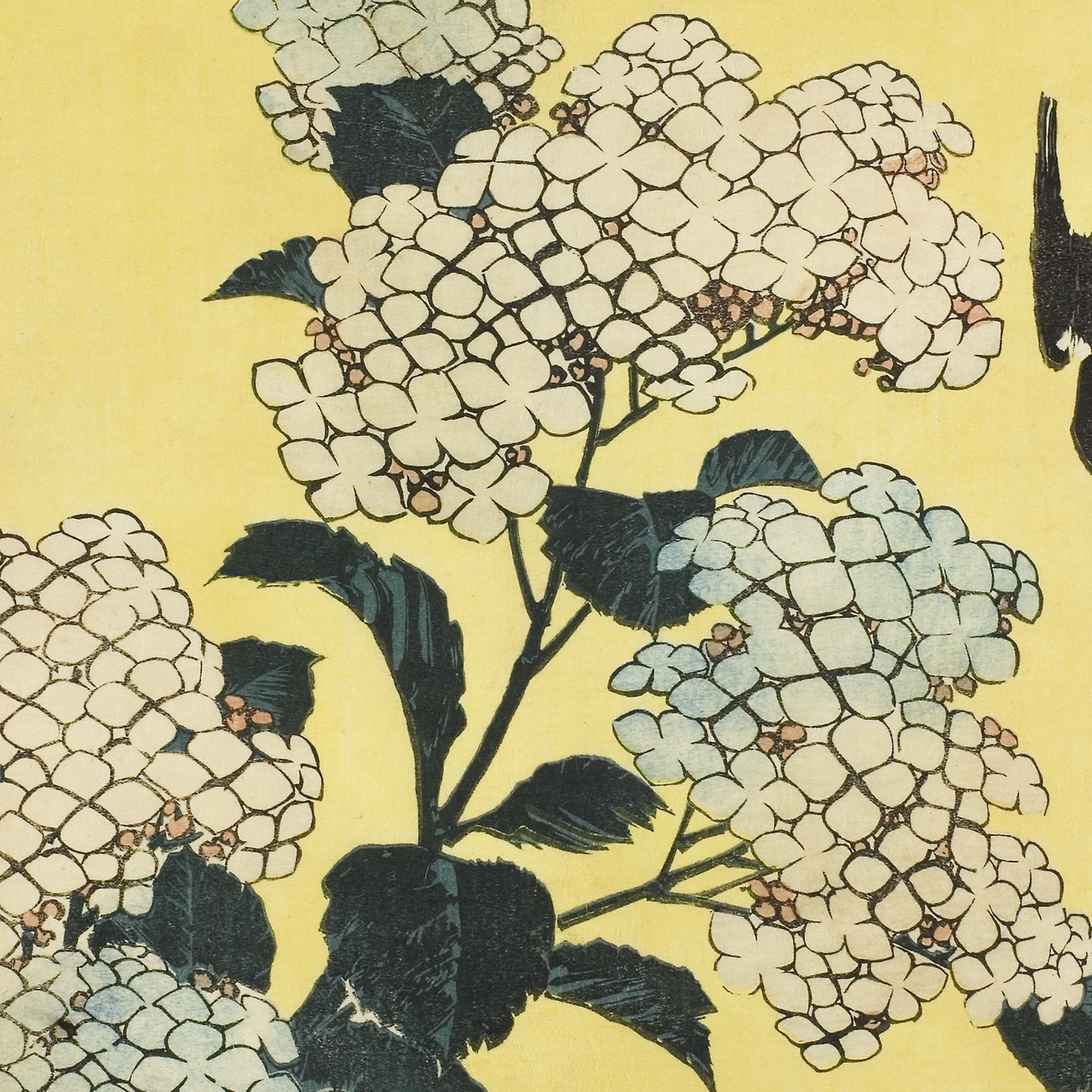1
/
of
6
Hydrangea and Swallow
Hydrangea and Swallow
Regular price
£12.45 GBP
Regular price
Sale price
£12.45 GBP
Taxes included.
Quantity
Couldn't load pickup availability
"Hydrangea and Swallow" (1833/34) by Katsushika Hokusai exemplifies the refined artistry of Japanese ukiyo-e woodblock printing. The composition captures a striking moment: a swallow in mid-flight near a blooming hydrangea, its delicate blue-purple clusters rendered with exceptional detail. The artist's mastery of colour gradation and spatial arrangement creates a harmonious balance between the dynamic movement of the bird and the static beauty of the flower.
Hokusai created this piece during his later years, when he was particularly focused on nature studies. This work belongs to a series of large-format flower prints, demonstrating his continued evolution as an artist even in his 70s. The meticulous attention to botanical accuracy, combined with the dramatic positioning of the swallow, showcases Hokusai's ability to merge scientific observation with artistic interpretation.
The technical execution reveals the sophisticated collaboration between artist, woodcarver, and printer - a hallmark of ukiyo-e production. Multiple woodblocks were used to achieve the varied colours and textures, from the subtle shading of the hydrangea petals to the precise detailing of the swallow's feathers. This piece reflects the broader Japanese artistic tradition of finding profound beauty in fleeting natural moments, a concept known as 'mono no aware'. The work also demonstrates Hokusai's influence on European Impressionists, who were captivated by his ability to capture nature's ephemeral qualities.
The print's subject matter was particularly meaningful in Japanese culture, where both hydrangeas and swallows were associated with the changing seasons and the transient nature of beauty. Hokusai's choice to pair these elements speaks to his deep understanding of traditional symbolism while showcasing his innovative compositional approach.
View full details
Hokusai created this piece during his later years, when he was particularly focused on nature studies. This work belongs to a series of large-format flower prints, demonstrating his continued evolution as an artist even in his 70s. The meticulous attention to botanical accuracy, combined with the dramatic positioning of the swallow, showcases Hokusai's ability to merge scientific observation with artistic interpretation.
The technical execution reveals the sophisticated collaboration between artist, woodcarver, and printer - a hallmark of ukiyo-e production. Multiple woodblocks were used to achieve the varied colours and textures, from the subtle shading of the hydrangea petals to the precise detailing of the swallow's feathers. This piece reflects the broader Japanese artistic tradition of finding profound beauty in fleeting natural moments, a concept known as 'mono no aware'. The work also demonstrates Hokusai's influence on European Impressionists, who were captivated by his ability to capture nature's ephemeral qualities.
The print's subject matter was particularly meaningful in Japanese culture, where both hydrangeas and swallows were associated with the changing seasons and the transient nature of beauty. Hokusai's choice to pair these elements speaks to his deep understanding of traditional symbolism while showcasing his innovative compositional approach.
